Shanti Mantra from the Taittiriya Upanishad – Sha(m)n No Mitra Sham Varunaha
It is recommended to chant this mantra daily before the start of the day. It helps in removing obstacles in the aspirants spiritual journey. This blog gives a summary of the Taittiriya Upanishad – where this Mantra is the Shanti Mantra. The significance of the mantra is explained as per Adi Shankara’s commentary. The last part includes the wording and a YouTube rendition.
Essence of the Taittiriya Upanishad
This Upanishad Belongs to The Krishna-Yajurveda.
The great sage Yajnavalkya quarrelled with his preceptor. He was asked by Vaishampayana, his Guru, to return the Veda which he had studied under him. Yajnavalkya vomited the Yajurveda he had learnt. The other Rishis, the pupils of Vaishampayana, assumed the forms of Tittiris (birds, partridges) and swallowed the Veda thus thrown out or vomited. Therefore it came to be known as Taittiriya-Samhita.
This Upanishad is divided into sections called vallis, viz., (1) Siksha-valli or the section on instruction. (2) Brahmananda-valli or the section on Brahma-bliss. (3) Bhrigu-valli or the section on Bhrigu.
In the first section the preceptor gives clear instructions to the aspirants on character building. He imparts to them rules of right conduct or right living in order to prepare themselves for the attainment of Brahma-Jnana or the knowledge of the Self.
The second section deals with bliss of Brahman. The order of creation is described in this Valli.
The third section deals with the story of Bhrigu, son of Varuna, who, under instructions from his father, understood Bliss or Brahman, after undergoing the required penance. In this section the description of the five Kosas or sheaths is clearly given.
Adi Shankara’s commentary on the Taittiriya Upanishad brings to fore a regular syllabus to teach the Brahma Vidya.
Attaining the knowledge of Brahman is not easy. The Gods themselves take a special interest in placing obstacles on the way of an aspirant. Even Rishis are not ready to impart the knowledge lest the householder who nourishes all ceases to work. But if the aspirant has passion to know the knowledge would come to him.
Shankara says this Upanishad opens with a mantra which removes obstacles when chanted.
It is a prayer to the vedic deities – Mitra, Varuna, Aryama, Indra, Brihaspati, and Vishnu. Shankara explains as follows. Mitra is the Devata Atman – The Shining One, the Intelligence, the Self identifying Himself with, and manifesting Himself as day & Prana or upward current of life breath. Varuna is the intelligence concerned with night and Apana or downward current of life breath. Aryama with the eye and the Sun, Indra with strength, Brihaspati with speech and buddhi or intellect, Vishnu with the feet.
Shankara says if these Vedic deities in charge of each individual organism are propitious, then one retains the wisdom acquired and imparts to others.
Praise and salutations are offered to Vayu (air) by the student seeking knowledge of Brahman so that obstacles to the attainment of such knowledge may be removed. All actions and their fruits are under the control of Vayu who is identified with prana. Here Vayu is addressed as Brahman. He is referred to as the visible because of his being direct, immediate, nearer than the sense organs and he can be felt.
The Teacher’s Vow of Truth
To speak the truth is the first necessity of a preceptor, tutor or teacher. ‘ऋतं वदिष्यामि। सत्यं वदिष्यामि।’ – ‘Rutam vadishyãmi; Satyam vadishyãmi’ – ‘I will only speak eternal principles. I will speak the truth (i.e., I will not teach false principles)’.
With these words the rishi has vowed to speak the truth. Here, the rishi is a preceptor, a tutor, a teacher and it is his duty to teach. To lie is a sin, but to teach a lie would be a grave sin. This is a special feature of Vedic guru-shishya dialogues. The teacher understands his responsibility to the disciple and to society. He understands his duty. He is fully aware of how much a defiled education can ravage a disciple’s life, and affect the whole of society.
Moreover, an honest person must be tolerant. He knows that he must bear the occasional hostile reactions of speaking the truth. For this very reason, knowing the continual necessity of such honest and tolerant preceptors in society, the tutoring rishi prays,
‘तन्मामवतु। तद्वक्तारमवतु। अवतु माम्। अवतु वक्तारम्।’
‘Tanmãmavatu; tadvaktãramavatu; avatu mãm; avatu vaktãram;’
‘O Lord! Save me. Save the orator, the teacher’.
Thus, the reason for praying for one’s safety is ultimately just to keep society well educated. This mantra shows the ideal approach a teacher before commencing his lesson.
Full Mantra
ॐ शं नो मित्रः शं वरुणः
Om Shan No Mitrah Sham Varunaha
शं नो भवत्वर्यमा
Shan No BhavatyaVaryama
शं नो इन्द्रो बृहस्पतिः
Shan Na Indroo Brihaspatihi
शं नो विष्णुरुरुक्रमः
Shan No VIshnur Urukramaah
नमो ब्रह्मणे
Namo Brahmanee
नमस्ते वायो
Namaste Vayu
त्वमेव प्रत्यक्षं ब्रह्मासि
TwaaMeva Pratyakasham Brahmaasi
त्वामेव प्रत्यक्षं ब्रह्म वदिष्यामि
TwaaMeva Pratyakshma Brahma Vadishyami
ॠतं वदिष्यामि
Ritham (Ridham) Vadishyaami
सत्यं वदिष्यामि
Sathyam Vadishyaami
तन्मामवतु
Tan Maam Avatu
तद्वक्तारमवतु
Tad Vaktaram Avatu
अवतु माम्
Avatu Maam
अवतु वक्तारम्
Avatu Vaktarammm..
ॐ शान्तिः शान्तिः शान्तिः
Om Shanti Shanti Shantihi
What is a Shanti Mantra
Shanti Mantras are invoked in the beginning of some of the Upanishads. They are believed to calm the mind and the environment of the reciter.
Shanti Mantras always end with the sacred syllable Om, and three utterances of the word “shanti”, which means “peace”.
The reason for the three utterances is regarded to be for the removal of 3 classes of obstacles – ‘Tapatraya’.
YouTube Link for Vedic Chanting

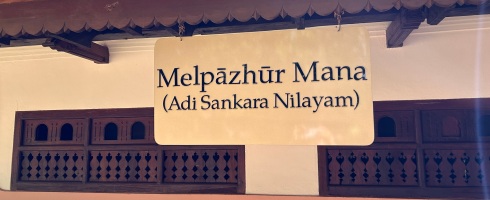
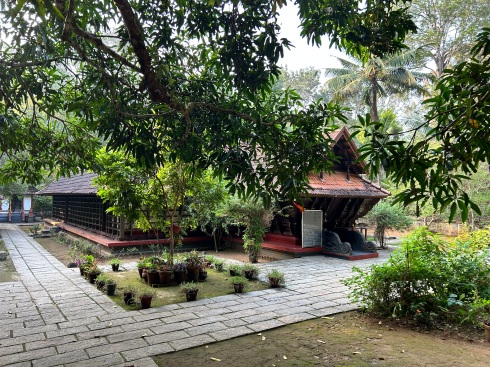
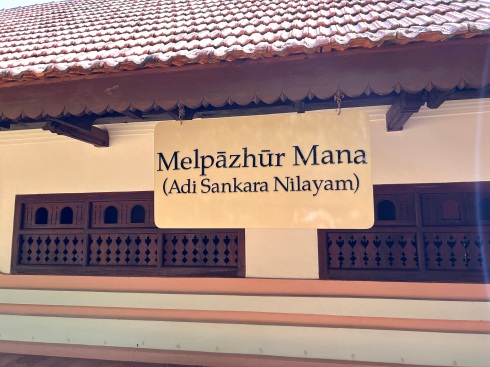
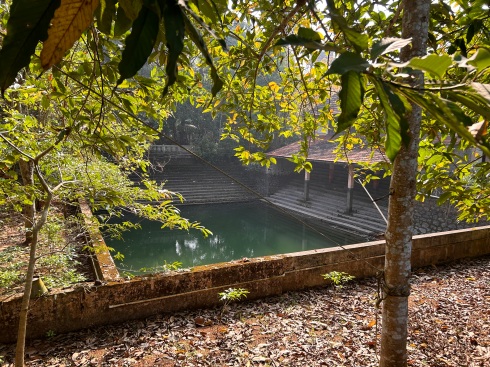
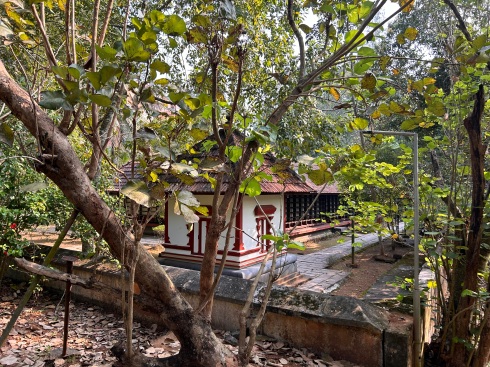
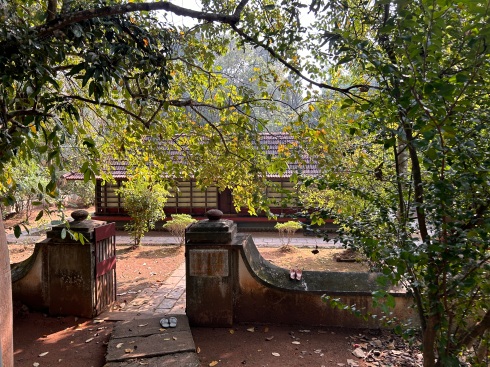
Vishnu Sahasranamam – Insights & Nuggets
20 FebVishnu Sahasranamam was composed by Vedavyasa. This is revealed in the Mahabharata.
The Context
Krishna wanted Yudhisthira to meet Bhishma before he passed aways so that he could receive all the wisdom and knowledge that Bhishma had garnered all these years and that would provide guidance to Yudhisthira on the art of ruling the world, and most importantly the art of preparing oneself for the after – life. Along with Krishna the brothers & Yudishtra approached Bhishma who was lying on a bed of arrows awaiting the sacred hour for his departure. It was Magha Shukla Ekadasi also called as Bheeshma Ekadasi.
Six Questions from Yudhishtra
Kimekam Daivatam Loke Kim Vap Yekam Parayanam
Stuvantah Kam Ka Marchantah Prapnuyur Manavah Shubham
Ko Dharmah Sarva Dharmanam Bhavatah Paramo Matah
Kim Japanmuchyate Janthur Janma Samsara Bandhanat
Bhishma answer to all questions points to Vishnu the eternal father – the One God. After answering all his questions Bhishma says – ‘I will now advise you on His thousand names. Please listen to them with all attention.’
Are there exactly 1000 names in the Vishnu Sahasranamam
There are 1031 single names of the Lord in the Vishnu Sahasranamam. The extra 31 names are to be considered as an adjective qualifying the immediate following noun. There are 20 double names in the first 500 names and 11 double names in the second half of the chant.
90 names are repeated in this hymn, of them 74 are repeated twice, 14 are repeated thrice and 2 of them repeated 4 times.
What was the test given to Adi Shankara before he commenced his journey as a missionary.
At the end of his short but intense study , Shankara went to seek the blessings of his teacher Govindapadacharya, before commencing his journey. Acharya Govindapada tested Shankara by asking him to write an exhaustive commentary on the Vishnu Sahasranamam. He accomplished this great task – His is one of the commentaries on the Vishnu Sahasranamam. Govindapada satisfied with the proficiency , blessed him and set him on the road to service & action.
The Supreme cannot be defined so how do we have a thousand names.
The Supreme cannot be denominated by any name or defined in any language or expressed even vaguely in any literary form. He is beyond the known & the unknown. He is the illuminating principal of Consciousness that illuminates all experiences.
Yet he has many manifestations. Therefore he can have infinite names in terms of His manifestations. These thousand names of the Lord have been coined and given out by the Rishis. They were collected and strung together into a joyous hymn in the Anushtup Chanda metre to Vishnu, a garland of devotion and reverence by Vyasa.
Kanchi Maha Periyava on how Vishnu Sahasranama came to us.
Back in the 1940s or 50s, someone was interviewing Maha Periyavaa Kanchi Paramacharya Sri Chandrashekara Saraswathi Swamiji. That man recorded the interview using a tape recorder.Periyavaa then posed a question.
“Does anyone know which is the oldest known tape recorder?” Nobody was able to answer. Then Maha Periyavaa asked another question.
“How did Vishnu Sahasranamam come to us?”
Someone said Bheeshma gave it to us. All agreed.
Then Maha Periyavaa posed another query.
“When all were listening to Bheeshma on the battlefield, who took notes at Kurukshetra?”
Again silence.
Maha Periyavaa explained.
When Bheeshma was glorifying Krishna with Sahasranamam everyone was looking at him including Krishna and Vyasa. After he finished the 1000 Namas all opened their eyes.
The first to react was Yudhishthira. He said, ‘Pithamaha has chanted 1000 glorious names of Vasudeva.
All of us listened but none of us have noted it down. The sequence is lost’.
Then all turned to Krishna and asked for His help.
As usual, He said, ‘I also was listening like the rest of you. What can we do?’
Then all beseeched Krishna to help them recover the precious rendition.
Then Krishna said, ‘It can only be done by Sahadeva and Vyasa will write it down.’
Everyone wanted to know how Sahadeva could do it. Krishna replied,
‘Sahadeva is the only one amongst us wearing SHUDHHA SPATIKAM. If he prays to Shiva and does dhyanam he can convert the SPATIKA into waves of sound and Vyasa can write it down. Then, both Sahadeva and Vyasa, sat in the same place, under Bheeshma, where he had recited ‘Sahasranamam’.
Sahadeva started the dhyanam to recover the sound waves from the Spatika.
The nature of Spatika is that it will capture sounds in a calm environment which can be got back with proper dhyanam of Maheswara who is Swethambara and SPATIKA.
So, the world’s earliest tape recorder is this SPATIKA which gave us the wonderful Vishnu Sahasranamam. When Maha Periyavaar explained this all were stunned… From the Spatika recording, the grantha came to us through Vyasa.
Tags: How many names are there in Vishnu Sahasranama, Interesting facts about Vishnu Sahasranama, What is Bheeshma Ekadashi, What was the first commentary written by Adi Shankara, When was Vishnu Sahasranama revealed